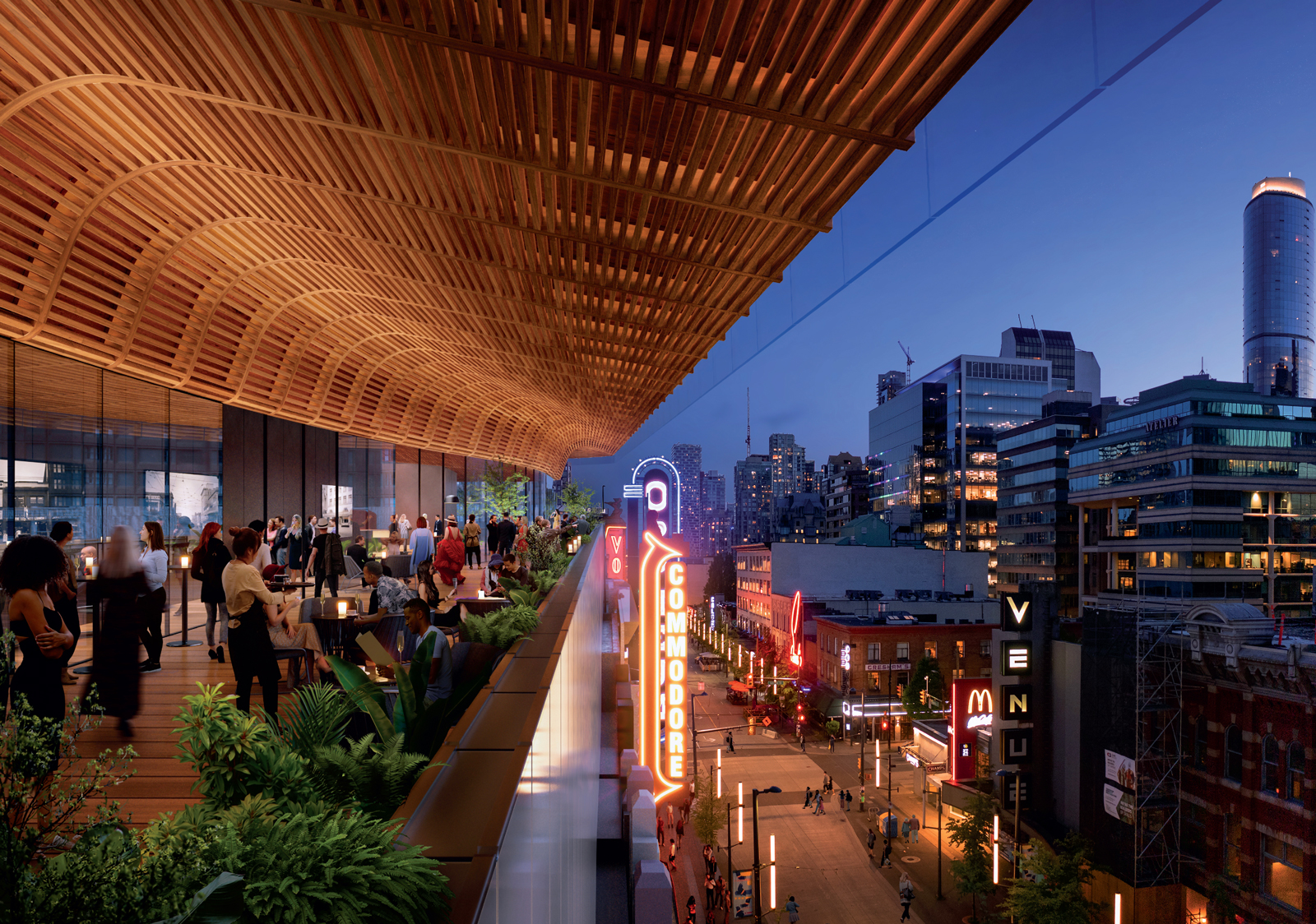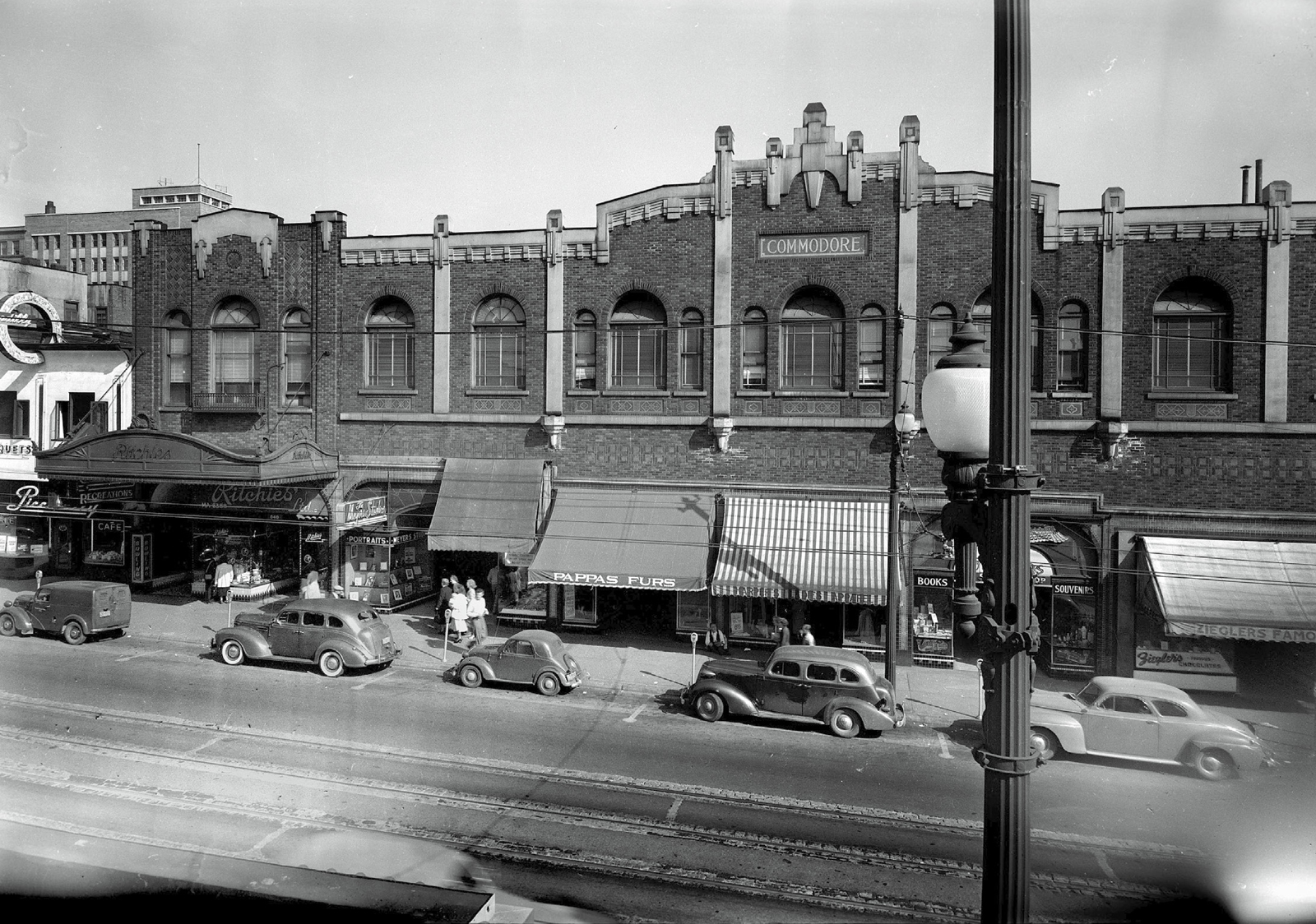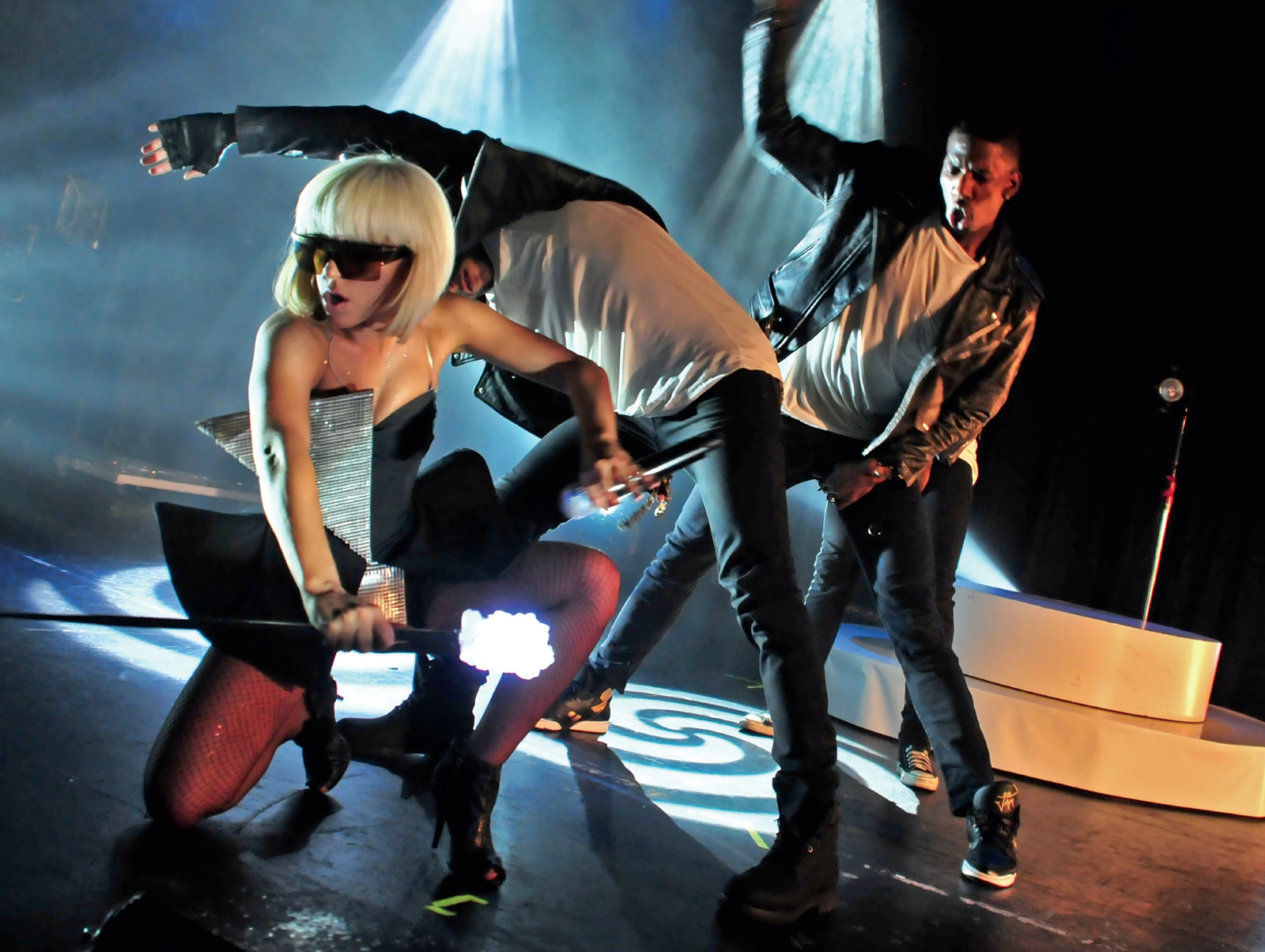For three long years at the end of the last century, a terrible malaise descended on Vancouver. If you walked along the east side of Granville Street between Smithe and Robson, you passed the once-mighty Commodore Ballroom, its doors now chained and assaulted with graffiti. With the Commodore’s brutal and sudden closure on July 12, 1996, its future became uncertain, its fate perhaps sealed. The spell was finally broken when Blue Rodeo opened a refurbished Commodore Ballroom on November 12, 1999, but those three years were a desolate period.
“Wasn’t it?” says Aaron Chapman, author of Live at the Commodore: The Story of Vancouver’s Historic Commodore Ballroom. “I remember some shows just never came to Vancouver. You saw them coming up the coast, but there just wasn’t an appropriate room to play. Very strange time. There was no end in sight. One year was weird, but then it went into that second year, and then the third, I think, before somebody announced, ‘Well, yeah, there’s a plan, maybe.’”
As Chapman’s bestselling book documents, it was the retirement of manager Drew Burns that plunged the Commodore into a tangle of business, real estate, and licensing conflicts. Indeed, the ballroom’s fortunes rose and fell with the gregarious risktaker Burns, who transformed the multipurpose room into a live music venue consistently ranked, alongside such storied halls as San Francisco’s Fillmore, as one of the best in the world. Burns might have been a little unsure of its potential when he purchased the Commodore lease in 1969.
Originally published in 2014, Live at the Commodore provides a brisk but thorough history of the ballroom, which opened on December 3, 1930, just in time for the big band era. By the time Burns came onboard, Chapman writes: “The Commodore was considered a nostalgic place, a remnant of a bygone era that hadn’t changed in decades.” It would be a couple of years before its glorious future came rocking into view, thanks to an appearance by Mitch Ryder in 1971—the week of Chapman’s birth, as it happens.

Photo courtesy of Pooni Group.
“It’d be neat to take a time machine and go back to the 1940s to see Ole Olsen and His Commodores, just to see how people talked and dressed and drank and ate,” Chapman says, speaking on the eve of publication of his updated edition of Live at the Commodore. Two men in our 50s, our conversation inevitably turns to the shows we’ve seen, or wished we’d seen, or were too drunk to remember seeing. “I wasn’t of age until the early ’90s,” he says, “and unlike so many other people, I didn’t have fake ID. I was too apple-cheeked and innocent to ever make it past security, but I wish I would have been there in 1974 for the New York Dolls, because when you talk to people who were there, they all say they’d never seen anything that crazy and shambolic.”
The key revision to Chapman’s book is its final chapter—more on that shortly—but he’s also beefed up the illustrations with posters, ticket stubs, and an otherwise mouthwatering collection of concert ephemera covering the ballroom’s glory days between the late ’70s and mid-’90s. In keeping with Vancouver’s characteristically haphazard attention to its own history, much of this material was discarded in 1999, then rescued by dumpster divers in Ackery’s Alley behind the Commodore and sold to Neptoon Records owner Rob Frith. As a picture of the talent that mounted the Commodore’s spacious stage—from Captain Beefheart to Talking Heads to k.d. lang to Tom Waits—it’s overwhelming.
It also increases the resolution on what made the Commodore Ballroom so important. In the same vein, Ian Copeland’s autobiography Wild Thing makes a good companion to Chapman’s book. In the late ’70s and early ’80s, the pioneering music promoter (brother to Police drummer Stewart and label owner Miles) began putting insurgent punk and new wave bands in midsized clubs, breaking the mould on a music industry that had cornered itself with stadium shows and behemoth touring acts like Pink Floyd and ELO. With the fabled Perryscope inaugurating its Cheap Thrills concert series at the Commodore in January 1978, Vancouver was primed to join the fun.
Chapman says, “When I interviewed Benmont Tench, keyboard player for Tom Petty and the Heartbreakers, who came in June 1978, he said, ‘We knew about the Commodore because some of our favourite bands had already played there. It was a big deal for us.’ It’s also special in the sense that it goes back to Vancouver being one of those vaudeville-era tour stops where people either started or ended their tour here because of our geographic location.”
“The Commodore sees people on the way up, and it sees people on the way down. It’s often only the first part of that phrase that gets uttered.”
The triumphant nights by touring acts including a very young (and reportedly arrogant) U2 in 1981 are innumerable, setting the table for the Commodore’s longevity, and the insider dope from its boom years is delicious. We learn, for instance, that Tina Turner made it her first priority upon arrival to sit with her friend Drew Burns. (During one visit, Turner prompted a brawl when she lost her top onstage.) The Commodore has otherwise been the scene of magnificent and sometimes historic failure. I happened to be in attendance for the total implosion of Ryan Adams and the Cardinals in 2005, as recounted in Chapman’s book by indie hero Dan Mangan. He recalls an unhinged Adams firing the band onstage that night, but I remember the band firing Adams after an hour or so of deranged rants and musical self-immolation. Either way, the tour was cancelled the next day amid unwholesome rumours. Chapman watched an unwell Scott Weiland nosedive four years later. “I remember seeing his band afterwards, and it looked like they had to do that every night. I felt sorry for him. The Commodore sees people on the way up, and it sees people on the way down. It’s often only the first part of that phrase that gets uttered.”

The Commodore Ballroom and Granville Street in the 1950s. Photo from VPL Special Collections #83192.
The venue itself isn’t spared by wayward fate or the drift of history. “I hate to it say it,” Chapman admits, assessing the fallout from COVID, which saddled current leaseholder and operator Live Nation with another audience-free two years, “but if Drew was still running the Commodore, he would not have been able to float it, and it would have turned into a Future Shop or something.”
The new chapter in Chapman’s book reflects a fraught new period for Vancouver, besieged by mounting social ills and rapid transformation under global finance. To his credit, Chapman remains positive. “I don’t talk so much about music, and I was worried that I might lose people a little,” he says, “but to not say anything about it would feel disingenuous or something. It felt like it needed to be addressed. Sometimes I feel like I’ll be the last man at the embassy here. I talk to people all the time, and I always sort of bristle at that idea that Vancouver was better back in the day. I think the golden age of something always changes with every generation, and everybody thinks that they saw the best of everything. But there’s some kid that’s going to go to the Commodore tonight, and he’s going to have just as good time as you did.”
It’s impossible to grasp a macro view of these things, but history rhymes, and it could be said that the fortunes of that bouncy Xanadu of entertainment hidden behind those handsome wooden doors signal the fortunes of the city at large. Chapman’s book begins with a reminder that the Commodore Cabaret, as it was originally called, was basically dead on arrival, shuttering within four months of its debut in 1930. It reopened, amid much public doubt, two months later, surviving a depression, war, perverse and stupid municipal and provincial policies, dramatic social upheaval, and the vagaries of a wicked and unstable entertainment industry, to still exist within seven years of its 100th birthday in 2030. Whereupon some kid will have a night as good as you ever did, and we’ll still be placing unwise bets on its demise.
Read more from our Autumn 2023 issue.









